Among all the realms nestled within the branches of Yggdrasil, Vanaheim is maybe the most elusive. Home to the Vanir gods tribe, not much is ever revealed about their realm. The name Vanaheim, from the Old Norse Vanaheimr, is a combination of – “Vana” referring to the Vanir tribe, and “heimr” meaning home or world. This realm, shrouded in mystery, was believed to have lush landscapes as the Vanir enjoyed a deep connection to nature.
When I started on this post I was reminded how little is known about Vanaheim, or indeed the Vanir themselves. Besides Njörd, Freyr and Freyja who came to Asgard after the Aesir-Vanir war, no other Vanir are ever named. Nor are there any tales of the Aesir (or anyone else) traveling there on some adventure.
Our understanding of Vanaheim is based on a very few sources which I will get into below. However, personally I am of the opinion that both the Vanir and their realm were part of Norse mythology.
Understanding Norse Cosmology
At the heart of Norse mythology lies Yggdrasil, the immense ash tree that connects the cosmos’s various realms through its sprawling branches and roots. This concept of the world tree is central to understanding the Norse universe, serving as a cosmic map where realms like Midgard (Earth), Asgard (the realm of the Aesir gods), and, of course, Vanaheim, find their place. Each realm has its unique characteristics and inhabitants, contributing to the overall balance and interconnectivity of the universe. Vanaheim, nestled within this cosmic structure, is integral to the Norse cosmological vision, embodying the natural and fertile aspects of the world.
Interestingly, the Vanir god Freyr, was made ruler of the realm Álfheim (home to the Light elves) as his toothing-gift. While only mentioned in passing, it seems this must have been a gift bestowed upon him by Odin, maybe as part of a reconciliation after the Aesir-Vanir war. However, if that was the case, then likely Freyr and his sister Freyja were toddlers when the war ended. Not that it would necessarily mean anything, the gods grew up fast.
Váli, (Aesir god of retribution) was only a day old when he killed Hödr (the blind, accidental killer of Baldur). Also, Magni, son of Thor, was only three days old when he saved his father who was trapped under the leg of the giant jötun Hrungnir.
The Landscape of Vanaheim
Little is shared about the realm of Vanaheim, this is different from most of the other realms in Norse mythology. Muspelheim is all fire and smoke, Niflheim is mist and cold, Jotunheim is cold and mountainous, Midgard is the green earth, Alfheim is beautiful and luminous, while Svartalfheim is its opposite, dark and underground.
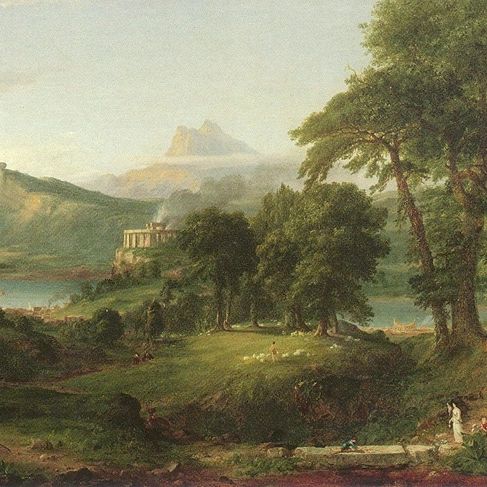
Vanaheim is never described in any of the ancient sources available to us today. However, based on the people living there, the Vanir, I feel it’s safe to make some assumptions. The Vanir are often described as a tribe closely associated with nature. This is especially so with regards to what they were believed to be the gods and goddess of, fertility, harvest, abundance and wealth (closely related to harvest and cattle).
Based on this, it is assumed that Vanaheim was fertile lands, abundant forests, and flowing rivers, mirroring the Vanir’s connection to growth and prosperity. It would likely have a tempered climate, supportive of farming.
While I find many people online wax poetic about the beauty and abundance of Vanaheim, I feel there are limits to how much we can assume just based on the Vanir. Suffice to say, it was likely an opposite of Jotunheim and close to the ideal world a farmer could envision.
The Vanir Tribe: Guardians of Vanaheim
The Vanir gods stand out in Norse mythology for their distinct qualities and domains. Unlike the Aesir, known for their prowess in battle and governance, the Vanir are closely tied to aspects of fertility, agriculture, wealth, and the sea. This connection to the earth and its cycles speaks volumes about the Norse people’s reverence for nature and its forces. The Vanir’s powers are not just limited to physical abundance; they also encompass profound wisdom and foresight, attributes that have led to their worship as gods of prosperity and future-seeing.
Seidr Magic
Moreover, the Vanir’s expertise in seidr, a form of magic associated with prophecy and manipulation of fate, further set them apart. It is said that Freya, a sister to Freyr, and daughter of Njörd, introduced the art of seidr to the Aesir, including Odin himself. Furthering Odin’s insatiable thirst for wisdom and knowledge, Freyja would have been a close ally.
Notable Vanir gods
The Vanir gods are largely unknown, other than Njord and his two children Freyja and Freyr, few others are ever mentioned. The only exception really is Njord’s sister and first wife, and mother to his son and daughter. Because of them being siblings, the Aesir would not allow Njord to bring his sister-wife with him to Asgard when they moved there.
Njord – Husband of Skadi
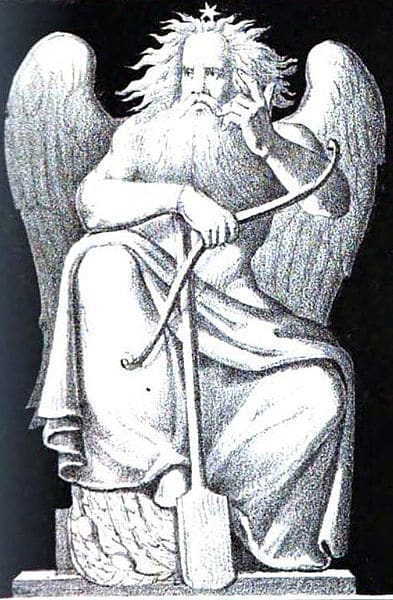
Njord is the older Vanir god who, along with his son and daughter, were exchanged as sort of hostages in a peace agreement after the Aesir-Vanir war. He had taken his own sister as wife, and together they had Freyr and Freyja. However, when moving the Asgard, the Aesir would not allow the nameless sister-wife to come along.
Later though, Njörd was married to the giantess Skadi, as a reconciliation gift after the Aesir killed her father Thjazi. It’s a fun story, how Skadi ends up choosing to marry Njörd, but it’s not a happy marriage. She is truly a “nature child” drawn to the winter and climate of the jotunheim mountains, while Njörd prefers living by the sea.
Freyr – Ruler of Alfheimr
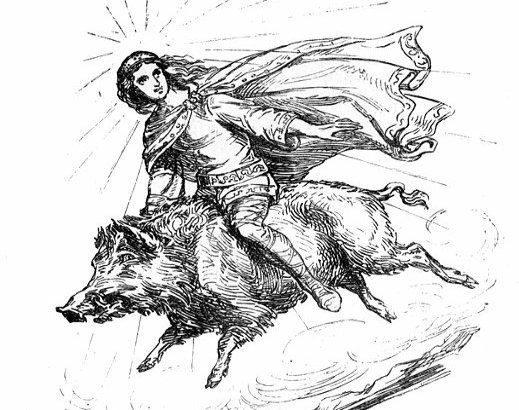
Freyr is the son of Njörd and brother to the goddess Freyja. Both siblings are associated with fertility and abundance. Even though he is a Vanir, he is “given” Alfheim as a toothing gift. There is never given any deeper explanation as to why this happened, or even when, but I think it would have been around the time of the Aesir-Vanir war. Before that, the Aesir and the Vanir were rivaling tribes, and while not at war, I don’t see them as close allies either. As such, there would be no reason for Odin to make him the ruler of a whole realm, he had plenty of sons who could have filled that role. However, if this came about around the time of the reconciliation, it makes more sense.
Freyr plays a role in different old stories, but the main one is arguably Skírnismál. It details how he one day sits in Odin’s seat on Hlidskjalf, and sees the beautiful jötun Gerdr in Jotunheim. His servant Skirnir is dispatched to Jotunheim to try to secure her hand in marriage for Freyr. This story also relates how he loses his sword, which magically could fight on its own. This loss is probably the reason for his death in Ragnarök, having to face the fire giant Surt without it.
Freyja – Goddess of Seidr Magic
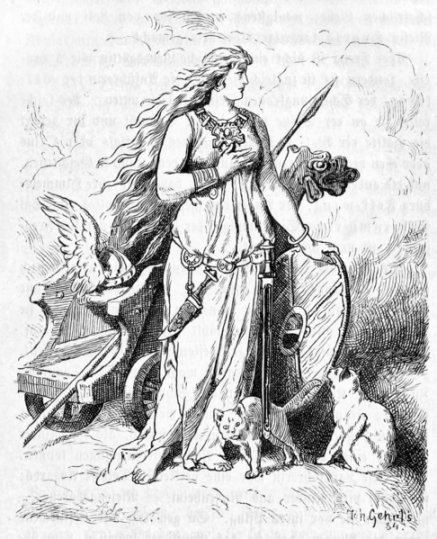
Last, but not least, Freyja is the third Vanir deity who came to live among the Aesir in Asgard. She is a central figure in Norse mythology and has even been suggested to have been another aspect, or name for Odin’s wife Frigg. However, I believe she was very much her own deity and goddess, separate from Frigg.
Credited with bringing the magical art seidr to the Aesir, and especially Odin, she gave them something immensely valuable. Maybe this is why she is also said to get to choose half the dead warriors and have them live at her own hall. This part of her mythology though is somewhat troubling to me, or doesn’t make much sense. Why would she be amassing an enormous army, and what happens to them? Odin’s Einherjar army is well known and their life as warriors in training for Ragnarök was the ideal the Viking Age men aspired to. Why there would be sort of a “second heavenly option” where you went to Freyja makes little sense. I think this is based on some misunderstanding, possibly based on her being responsible, or the leader, of the Valkyries.
The Aesir-Vanir War: Origins, Outcomes, and Implications
The Aesir-Vanir War is an early event in the stories of Norse mythology. It shares some similarities with wars among the different generations of gods in Greek mythology. There, the generational wars herald a new set of gods, finally leading to the twelve (or fourteen) Olympians.
Not quite the same, but the Aesir-Vanir war sets the stage for the pantheon of Norse gods as we know them.
For such an important event, it isn’t mentioned often. However, in the Völuspá we find the volva describing it briefly in stanza 24.
- Fleygði Óðinn
ok í fólk um skaut,
þat var enn fólkvíg
fyrst í heimi;
brotinn var borðveggr
borgar ása,
knáttu vanir vígská
völlu sporna.
In the 1923 translation of Henry Adams Bellows, it is written like this:
On the host his spear | did Othin hurl,
Then in the world | did war first come;
The wall that girdled | the gods was broken,
And the field by the warlike | Wanes was trodden.
The Clash of Divine Ideologies
The war was possibly started by the Vanir, after the Aesir tried to kill a witch named Gullveig. They launched an assault on Asgard, breaching its formidable fortifications. Despite their formidable war skills, the Aesir found the Vanir to be indomitable opponents, leading to a stalemate that neither side could decisively win. This impasse underscored the strengths and vulnerabilities of both tribes, highlighting the need for a resolution that would restore balance and harmony to the cosmos.
The Path to Reconciliation
The eventual truce and exchange of hostages between the Aesir and Vanir marked a turning point in their relationship. Njord, along with his children Freyr and Freyja, were sent to Asgard as tokens of peace, where they were welcomed and integrated into the Aesir pantheon. In return, the Aesir sent Hoenir and Mimir to the Vanir, aiming to share wisdom and strengthen diplomatic ties. However, the exchange was not without its challenges, as misunderstandings and misjudgments tested the fragile peace. Hoenir ended up dead, and Mimir, while living on, only had his head.
The Divine Being Kvasir
In the aftermath of the Aesir-Vanir War, a remarkable figure emerged from the peace treaty that symbolized the newfound harmony between the two divine factions. Kvasir, a being of unparalleled wisdom, was created from the saliva of both Aesir and Vanir gods as a testament to their reconciliation. This unique origin endowed Kvasir with an insight so profound that there was no question he could not answer. Roaming freely across the realms, he became a symbol of the unity and shared knowledge between the once-warring tribes. On his travels he would be teaching and spreading wisdom wherever he went.
Tragically, Kvasir’s story takes a dark turn, illustrating the theme of betrayal that runs through Norse mythology. His unmatched intelligence became the cause of his demise at the hands of two dwarves, Fjalar and Galar. They killed Kvasir and brewed mead from his blood, a magical potion that bestowed the gift of poetry and wisdom upon those who drank it. This mead, known as the Mead of Poetry, became a coveted treasure, symbolizing the profound knowledge and creative spirit that Kvasir had embodied.
Vanaheim and the Vanir in Ragnarok
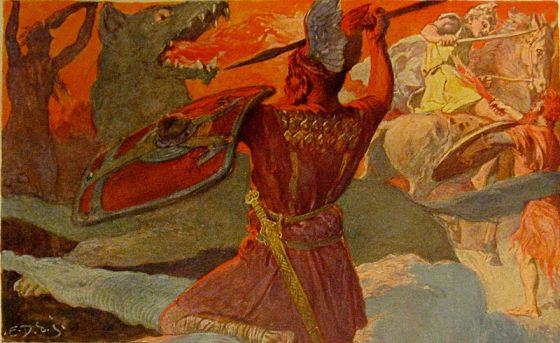
Ragnarok, the prophesied apocalypse in Norse mythology, involves all the realms and their inhabitants in a final, cataclysmic battle. Then, the gods and at least the Light Elves, will stand together, fighting against the jotnar, and monstrous children of Loki. Freyr dies a heroic death as he battles the fire giant Surt, but little is said about Freyja and Njörd. However, from the Völuspá we learn that Njörd returns to Vanaheim after the gods defeat. From this, we can safely assume that it was protected, even through Ragnarök, and that he wasn’t the only Vanir to have survived, possibly Freyja went with him, but this we don’t know.
Vanaheim in Sagas and the Eddas
The Poetic Edda and the Prose Edda, our primary sources for Norse mythology, offer glimpses into Vanaheim and the Vanir. However, it’s important to keep in mind that the Prose Edda was written a couple of hundred years after the Viking Age had ended. Furthermore, it was written by a Christian, namely Snorri Sturluson. It’s well known that there are mistakes, misunderstandings and even creative liberties taken in the Prose Edda. It is up to us, to use it carefully as a source, and rather see it as a guide to try to get to the truths hidden in the older, Poetic Edda poems.
Another source which covers the Aesir and Vanir is the Ynglinga saga from the Heimskringla. It was written down by Snorri around 1225 and in it, the Aesir and Vanir are two tribes that came from Asia. This representation of them as mere people who migrated from another land is likely down to Snorri’s Christianity, and need to rewrite the Old Norse gods origins.
The below part of the Ynglinga saga was translated by Samuel Laing in 1844.
Ynglinga Saga
4. OF ODIN’S WAR WITH THE PEOPLE OF VANALAND.
Odin went out with a great army against the Vanaland people; but
they were well prepared, and defended their land; so that victory
was changeable, and they ravaged the lands of each other, and did
great damage. They tired of this at last, and on both sides
appointed a meeting for establishing peace, made a truce, and
exchanged hostages. The Vanaland people sent their best men,
Njord the Rich, and his son Frey. The people of Asaland sent a
man called Hone, whom they thought well suited to be a chief, as
he was a stout and very handsome man; and with him they sent a
man of great understanding called Mime. On the other side, the
Vanaland people sent the wisest man in their community, who was
called Kvase. Now, when Hone came to Vanaheim he was immediately
made a chief, and Mime came to him with good counsel on all
occasions. But when Hone stood in the Things or other meetings,
if Mime was not near him, and any difficult matter was laid
before him, he always answered in one way — “Now let others give
their advice”; so that the Vanaland people got a suspicion that
the Asaland people had deceived them in the exchange of men. They
took Mime, therefore, and beheaded him, and sent his head to the
Asaland people. Odin took the head, smeared it with herbs so
that it should not rot, and sang incantations over it. Thereby
he gave it the power that it spoke to him, and discovered to him
many secrets.
….
Prose Edda Gylfaginning
In the Prose Edda, Snorri also mentioned the Vanir gods, and where they come from. This is found in stanza 23 in the Gylfaginning.
23. The third Aesir is he who is called Njord. He dwells in Noatun, which is in heaven. There he rules the course of the wind and checks the fury of the sea and of fire. He is invoked by seafarers and by fishermen. Njörd is so rich and wealthy that he can give broad lands and abundance to those who call on him for them.
He was fostered in Vanaheim, but the vanir gave him as a hostage to the gods, and received in his stead as an Aesir-hostage the god whose name is Honer. He established peace between the gods and vanir. Njord took to wife Skade, a daughter of the giant Thjasse.
Vafthruthnirsmal – Poetic Edda
Possibly the most important mention of Vanaheim and the origins of the Vanir is found in the Poetic Edda poem Vafthruthnirsmal. This ancient poem found in the collection of poems known as the Poetic Edda (the poems vary slightly depending on the version) is basically straight from the vikings themselves.
In the poem Odin travels deep into Jotunheim, to meet the wise old jötun Vafthruthnir, for a battle of wits. Odin is driven by his desire to learn ever more about the past and the prophesied future.
Odin spoke:
- “Tenth answer me now, | if you are all knowing
The fate that is set for the gods:
Where did Njord come from | to the race of the Aesir,
(Rich in temples | and shrines he rules,–)
Yet he was not born of the Aesir?”
Vafthruthnir spoke:
- “In the home of the Vanir | did the wise ones create him,
And gave him as pledge to the Aesir;
At the end of the world | he will travel once more
Home to the wise Vanir.”
Last Thoughts on Vanaheim
Vanaheim occupies a unique place in Norse mythology, embodying the themes of fertility, prosperity, and harmony with nature. Its gods are largely unknown, except for Njörd, Freyr and Freyja who are basically adopted into the Aesir and the larger Old Norse pantheon of gods.
Based on what we learn from Vafthruthnir we know that the realm survives Ragnarök and that at least Njörd, and possibly Freyja, goes back there after the apocalypse. With few real sources, most of what we believe about the realm is inferred from the three gods and their associated powers and responsibilities.
Featured Image Credit: the.norse.pagans via Instagram

Is it possible the Vanir gods are older and came before the Aesir? Or 2 different groups gods. And the war stiry was a way of combining the 2. It makes sense to me because the Vanir are more nature centered which tends to be the case in older gods and the Aesir seem to take on more modern human ideas of war and government coming later. It reminds me of the Greek gods and the different generations.
Hi Bex, thank you for your interest, and great reflection on the gods. I’m with you in thinking that the Vanir might have been an older race, in some variations of their belief. Going into the creation story though, Odin and his brothers creates “everything”, so how could the Vanir have existed before that? Then, to thouroughly confuse us, at Ragnarök, Njörd is said to go home to Vanheim, so it exists somehow outside of the destruction of Ragnarök, which then might be contained to Midgard and Asgard? I think it’s fascinating how the origins of the gods and their realms are still a bit of a mystery.
I really enjoyed reading this article. I was looking for any possible kernels of historical truth or basis for the Aesir Vanir war. Perhaps a timeline. I believe it was the Ynglinga Saga that speaks of Roman Generals all over Europe that Odin was aware of and was smart to locate his people far in the North. Thanks!
Thanks Scott, great to hear you enjoyed the article, means a lot to get feedback from other enthusiasts!